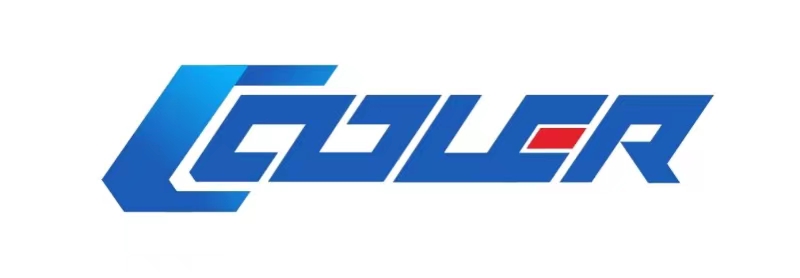ওয়াটার কুলড চিলার রেফ্রিজারেশন সরঞ্জামের একটি মৌলিক অংশ। এর প্রয়োগ বিভিন্ন রকম: বৃহৎ HVAC ইনস্টলেশন, যেমন হোটেল বা অফিস; প্রক্রিয়া এলাকা বা বিতরণ কেন্দ্র যেখানে উচ্চ তাপমাত্রা ব্যবহার করা হয়; এবং সরঞ্জাম সহায়তা, অন্যান্য ক্ষেত্রে।
জল-ঠান্ডা কুলারটি একটি রেফ্রিজারেটর মেশিন, এবং এর প্রধান উদ্দেশ্য হল তরল, প্রধানত জল বা বিভিন্ন শতাংশ গ্লাইকলযুক্ত তার মিশ্রণের তাপমাত্রা হ্রাস করা।
এর প্রক্রিয়াটি একটি বিকল্প রেফ্রিজারেশন চক্রের সাথে একই সাথে ঘটে এবং এটি সরাসরি সম্প্রসারণ, পুনঃসঞ্চালিত রেফ্রিজারেন্ট, বিকল্প, ইত্যাদি হতে পারে। যাইহোক, আসুন এর কার্যকারিতা এবং সুবিধাগুলি সম্পর্কে কথা বলি।
ওয়াটার কুলড চিলারের সুবিধা
ওয়াটার কুলড চিলার ব্যবহারের প্রধান সুবিধাগুলি হল:
1. নির্ভুলতা
চিলারের ইলেকট্রনিক অপারেটিং কন্ট্রোলের জন্য ধন্যবাদ, প্রাপ্ত জল তার প্রোগ্রামিং অনুসারে একটি স্থির তাপমাত্রায় রাখা হয়; একটি ডিফিউজার সিস্টেমে এই তরল ব্যবহার করলে তাপমাত্রা ঐতিহ্যবাহী সিস্টেমের তুলনায় আরও সুনির্দিষ্টভাবে বজায় রাখা যায়। এটি ফার্মাসিউটিক্যাল, পরিপক্কতা বা হাসপাতালের অ্যাপ্লিকেশনের জন্য খুবই কার্যকর, যেখানে ঘরের তাপমাত্রা যতটা সম্ভব কম ওঠানামা করা প্রয়োজন।
2. অপারেশন স্থিতিশীলতা
একটি ঐতিহ্যবাহী রেফ্রিজারেশন সিস্টেমে, কম্প্রেসারগুলি, লক্ষ্য তাপমাত্রায় পৌঁছানোর সাথে সাথে, অপারেটিং চক্র তৈরি করে যা ঘরের তাপমাত্রা বৃদ্ধির কারণে কারেন্ট খরচের সর্বোচ্চ স্তরে পৌঁছে দেয়।
যদি জল প্রবেশ এবং নির্গমনের একটি ধ্রুবক চক্র থাকে, তাহলে কম্প্রেসার সর্বদা চালু থাকে, এই পরিবর্তনগুলি এড়িয়ে।
৩. ইনস্টলেশন খরচ
এই ইউনিটগুলিতে খুব কম পরিমাণে রেফ্রিজারেন্ট ব্যবহার করা হয় এবং তাদের অনেকগুলি এমনকি প্রি-চার্জ করা হয় কারণ পরিমাপটি কেবলমাত্র এক্সচেঞ্জারের উপর নির্ভর করে, ইনস্টলেশনের বৈশিষ্ট্য নির্বিশেষে।
তবে, এর কারণ হল পুরো ইনস্টলেশনের মধ্য দিয়ে যে প্রাথমিক তরলটি সঞ্চালিত হয় তা আসলে ঠান্ডা জল, যা পিভিসি বা স্টেইনলেস স্টিলের পাইপের মাধ্যমে পরিবহন করা যেতে পারে।
এটি হোটেল বা বিতরণ কেন্দ্রগুলিতে অনেক সাহায্য করে, যেখানে রেফ্রিজারেন্ট এবং পাইপের খরচ কমবে।
ওয়াটার কুলড চিলার এবং এর কার্যকারিতা
চিলারের সবচেয়ে সাধারণ কনফিগারেশনে একটি সরাসরি সম্প্রসারণ রেফ্রিজারেশন সিস্টেম থাকে; প্রচলিত সিস্টেমের তুলনায় স্ট্যান্ডার্ড সরঞ্জামের চক্রে কোনও প্রাসঙ্গিক পরিবর্তন নেই এবং দুটি প্রধান স্তর প্রদান করে:
১. নিম্নচাপ
যেখানে রেফ্রিজারেন্ট তরল থেকে গ্যাস পর্যায়ে রূপান্তরিত হওয়ার জন্য তাপ শোষণ করে এবং পরবর্তীতে, সংকোচন প্রক্রিয়ার মাধ্যমে, তার চাপ এবং তাপমাত্রা বৃদ্ধি করে।
2. উচ্চ-চাপ অঞ্চল
যেখানে রেফ্রিজারেন্ট ঘনীভবন প্রক্রিয়া সম্পন্ন করার জন্য পরিবেশে তাপ ছেড়ে দেয় এবং তরল রেখাটি সম্প্রসারণ যন্ত্রে প্রবেশ করে, যা রেফ্রিজারেন্টের চাপ এবং তাপমাত্রা হ্রাস করে এবং চক্রটি আবার শুরু করার জন্য মিশ্রণ অঞ্চলে নিয়ে যায়।
প্রচলিত সরাসরি সম্প্রসারণ রেফ্রিজারেশন চক্র চারটি প্রধান উপাদান নিয়ে গঠিত:
i. কম্প্রেসার
ii. এয়ার-কুলড কনডেন্সার
iii. সম্প্রসারণ যন্ত্র
iv. বাষ্পীভবনকারী/তাপ এক্সচেঞ্জার
ওয়াটার কুলড চিলারের ব্রেকডাউন প্রতিরোধমূলক রক্ষণাবেক্ষণ
চাক্ষুষ পরিদর্শন: ক্ষতিগ্রস্ত উপাদান সনাক্তকরণ, রেফ্রিজারেন্ট লিক, কনডেন্সার পরিষ্কার করা, কম্প্রেসারে কম্পন (ফাস্টিং স্ক্রু), তাপ নিরোধক, চাপের ড্রপ, সংযোগ সুরক্ষা, তেল গরম করার প্রতিরোধক, রেফ্রিজারেন্ট পরীক্ষা, কম্প্রেসারে তেলের চাপ।
পোস্টের সময়: নভেম্বর-১৬-২০২২





